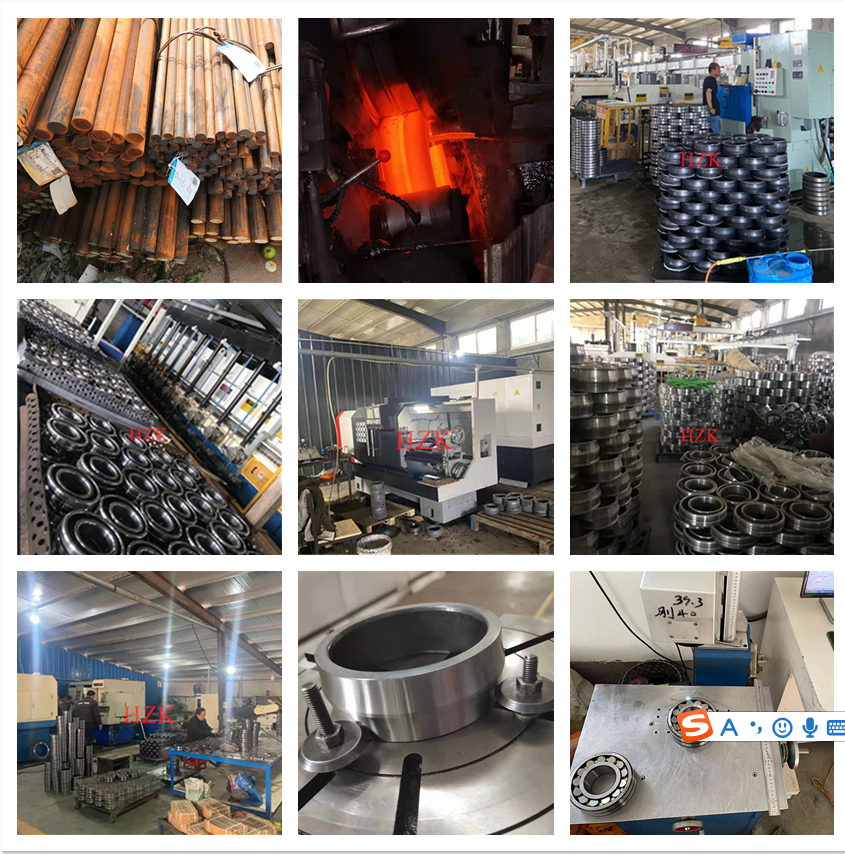The self-aligning ball bearing is a double-row ball bearing with the raceway of the outer ring processed into a spherical shape, and the inner ring has two deep groove raceways. It has self-aligning performance. It is mainly used to bear radial load. While bearing radial load, it can also bear a small amount of axial load, but generally cannot bear pure axial load, and its limit speed is lower than that of deep groove ball bearings. This type of bearing is mostly used on double-supported shafts that are prone to bending under load, and in parts where the double seat holes cannot guarantee strict coaxiality, but the relative inclination between the centerline of the inner ring and the centerline of the outer ring must not exceed 3 degrees.
The inner bore of self-aligning ball bearings in series 12, 13, 22 and 23 can be cylindrical or conical. Self-aligning ball bearings with an inner bore taper of 1:12 (code suffix K) can be installed directly on a conical shaft or on a cylindrical shaft through an adapter sleeve. In addition to unsealed self-aligning ball bearings, FAG can also provide basic types of self-aligning ball bearings with seal covers at both ends (code suffix 2RS). Self-aligning ball bearing bearing clearance
The basic type of self-aligning ball bearings with cylindrical bores is manufactured with a common clearance group, and bearings with a radial clearance larger than the normal clearance (code suffix C3) are available upon request. The radial clearance of the basic type self-aligning ball bearing with tapered hole is C3 group which is larger than the ordinary group.
Sealed self-aligning ball bearings
Sealed self-aligning ball bearings (code suffix .2RS) have seal covers (contact seals) at both ends. To ensure longevity, they have been greased at the factory. The minimum operating temperature of sealed bearings is limited to -30°C.
Alignment of self-aligning ball bearings</p><p> Self-aligning ball bearings allow the shaft to deflect 4° around the center of the bearing, and sealed self-aligning ball bearings can compensate up to 1.5°. 1. Adapt to misalignment conditions Self-aligning ball bearings can adapt to misalignment conditions better than any other bearing. Even in the case of shaking, the bearing can still run smoothly. 2. Excellent high-speed performance Self-aligning ball bearings have the lowest starting and running friction among all roller bearings. In other words, the bearing has excellent high-speed performance. 3. Minimum maintenance requirements Only a small amount of lubricant is needed to make the self-aligning ball bearing run efficiently. Its low friction and superior design extend relubrication intervals. Sealed bearings require no relubrication. 4. Low noise and vibration level A large number of comparative tests have shown that: self-aligning ball bearings have precise and smooth raceways, making them have the lowest vibration and noise levels.
Self-aligning ball bearings have two structures: cylindrical hole and tapered hole, and the cage is made of steel plate, synthetic resin, etc. Its characteristic is that the raceway of the outer ring is spherical and has self-aligning properties, which can compensate errors caused by different concentricity and shaft deflection, but the relative inclination of the inner and outer rings must not exceed 3 degrees.
Structural form of self-aligning ball bearing: The deep groove ball bearing with dust cover and sealing ring has been filled with proper amount of grease during assembly. It should not be heated or cleaned before installation, and no relubrication is required during use. It is suitable for operating temperatures between -30°C and +120°C.
Main application of self-aligning ball bearings: suitable for precision instruments, low-noise motors, automobiles, motorcycles and general machinery, etc. It is the most widely used type of bearing in the machinery industry.
Post time: Jul-24-2023





